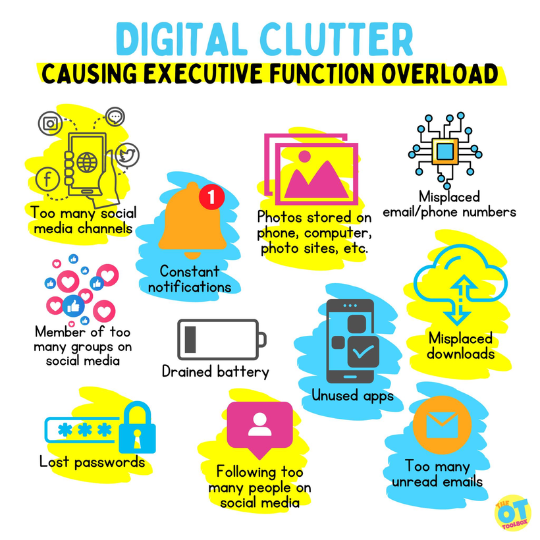
What Is Digital Fatigue?
Digital fatigue, sometimes called “screen fatigue” or “tech burnout,” is the mental exhaustion that comes from prolonged interaction with digital devices — phones, computers, tablets, and even smartwatches. It’s not just about tired eyes; it’s a whole-body experience that can affect focus, sleep, posture, and even mood.
At its core, digital fatigue is a biological stress response to overstimulation. The constant stream of notifications, scrolling, and multitasking keeps the brain in a state of low-level alertness. Over time, this drains cognitive energy and shortens our attention span.
The Science Behind It
1. Cognitive Overload
Each ping, pop-up, and app switch forces your brain to reset its attention. Research in cognitive psychology shows that frequent task-switching can reduce productivity by up to 40%, as your brain takes time to reorient every time you shift focus.
2. Blue Light and Circadian Rhythm
Screens emit blue light, which suppresses melatonin — the hormone that regulates sleep. Too much evening exposure disrupts your body’s natural rhythm, leading to poor-quality rest and sluggish mornings.
3. Emotional Drain
Social media and constant connectivity can create a cycle of comparison and anxiety. Notifications trigger dopamine spikes (reward signals), but the crash afterward can leave you feeling low or distracted.
Signs You’re Experiencing Digital Fatigue
- You feel mentally foggy after a day online
- You reach for your phone reflexively, even when you don’t need it
- You struggle to focus on non-digital tasks (like reading a book)
- You experience headaches, dry eyes, or neck tension
- You feel more anxious or irritable than usual
If any of these sound familiar, it might be time for a digital reset.
The 7-Day Digital Reset
This isn’t about quitting technology altogether — it’s about reclaiming balance. Here’s a structured plan to help you recharge without disconnecting completely.
Day 1: Awareness
Start by tracking your screen time and digital habits. Use built-in tools (like Screen Time on iOS or Digital Wellbeing on Android). Don’t change anything yet — just notice where your attention goes.
Day 2: Declutter Your Digital Space
Unsubscribe from unnecessary emails. Delete or mute distracting apps. Organize your home screen to feature only what adds value or joy.
Goal: Reduce “digital noise” and decision fatigue.
Day 3: Notification Detox
Turn off non-essential notifications. Silence group chats during work hours. Create focused blocks of time where your phone is on Do Not Disturb mode.
Day 4: Screen-Free Mornings
Avoid screens for the first 30–60 minutes of your day. Instead, stretch, meditate, or journal. You’ll begin to notice calmer mornings and better mental clarity.
Day 5: Analog Evening
Replace one hour of evening screen time with a non-digital activity — reading a physical book, cooking, or going for a walk. This helps reset your sleep-wake cycle.
Day 6: Single-Tasking Challenge
Pick one task and give it your full attention — no multitasking, no toggling tabs. Notice how much calmer and more productive you feel.
Day 7: Reflection and Rebalance
Reflect on the week. Which habits helped the most? What digital boundaries will you keep long-term? Consider scheduling “digital sabbaths” — a few hours each weekend completely offline.
Long-Term Habits to Prevent Digital Fatigue
- Practice the 20-20-20 rule: Every 20 minutes, look 20 feet away for 20 seconds.
- Keep devices out of the bedroom.
- Use apps in grayscale mode to make them less addictive.
- Schedule “deep work” periods free from distractions.
- Prioritize real-world social connections.
The Takeaway
Digital tools aren’t the enemy — they’re essential to modern life. But when our relationship with them becomes unbalanced, our mental and physical health pay the price.
By becoming more mindful and intentional with your tech use, you can transform digital fatigue into digital resilience — reclaiming focus, creativity, and calm in an always-connected world.
Would you like me to tailor this piece for a specific audience or platform (e.g., a wellness blog, professional magazine, or corporate newsletter)? I can adjust the tone and length accordingly — for example, making it more conversational, citation-heavy, or SEO-optimized.
Leave a Reply